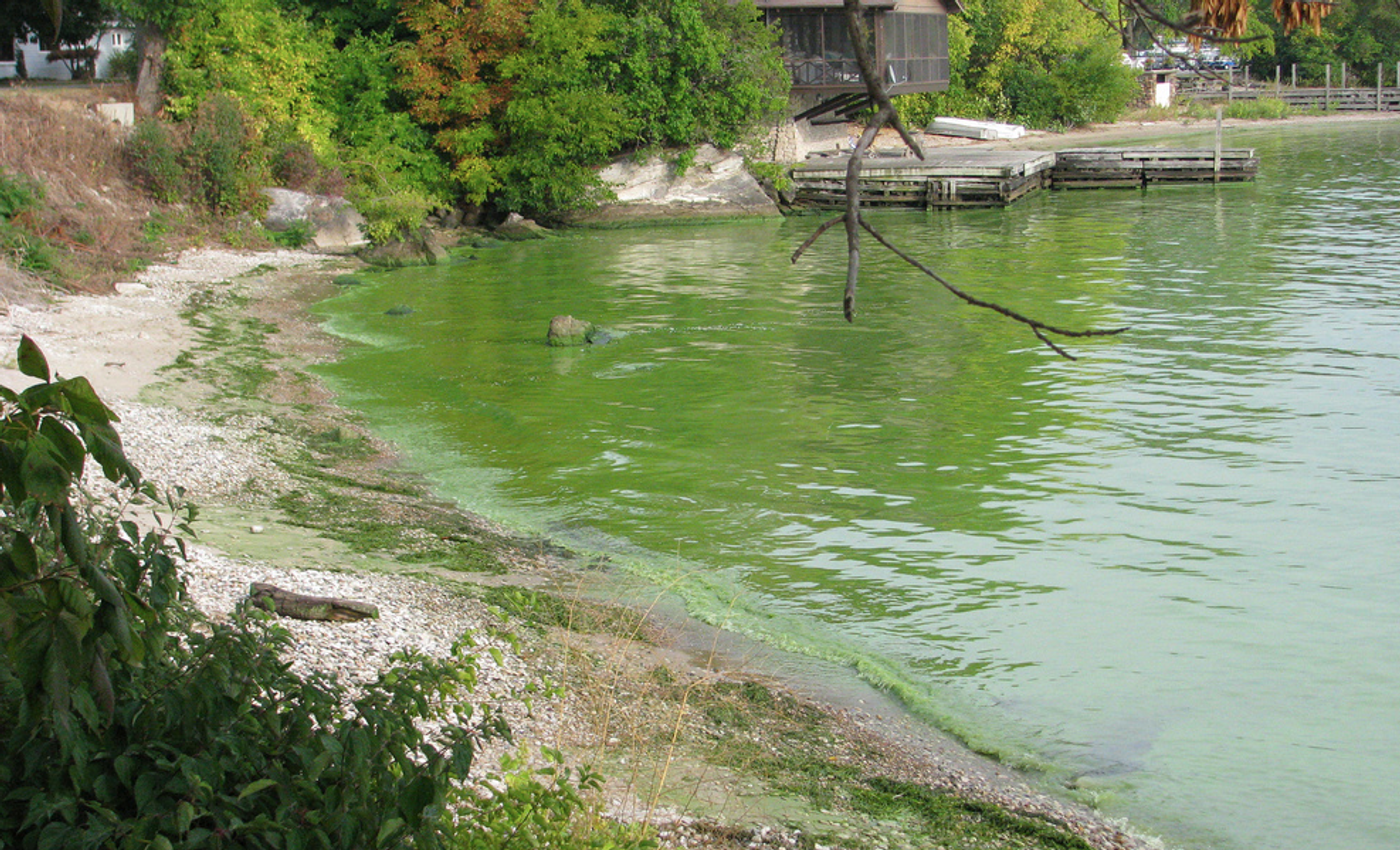Virus Likely Played a Role in Water Supply Disruption by Toxic Algal Bloom
Since the 1990s, algal blooms have exploded in growth in bodies of water around the world. In August 2014, the city of Toledo felt the effects when algal blooms in Lake Erie began emitting toxins that shut down the water supply, described in the video below from CBS Evening News. Half a million residents were left without drinking water for over two days. New work by scientists at the University of Tennessee, Knoxville, has indicated that a virus likely played a role in the crisis that unfolded. Publishing in Environmental Science and Technology, the researchers suggest that more stringent methods of water monitoring should be put into practice.
The cyanobacterial organism Microcystis causes scummy algal blooms in Lake Erie. The research team learned that while it was like algal blooms from 2012 and 2013, it differed from the bloom in 2014 in one specific way; the Microcystis cells were infcted with a virus that year. Blooms normally try the toxins inside cells, but an infection with a virus can cause the cells to rupture and leak their contents into the water, polluting the supply, the intake pipes and water facilities. Humans are not infected by these algae viruses.
The viruses analyzed in the study infect only bacteria and do not infect humans.
"The study changes the way we think about how the toxin moves around aquatic systems and gets into water supplies," said Steven Wilhelm, the Kenneth and Blaire Mossman Professor of Microbiology. "It may help us understand how these organisms persist in nature."
The investigators also used mathematical models to simulate the movement of algal blooms in water. Satellite images were able to precisely map bloom location on specific days, while computers filled in the gaps that were left.
Related: Toxic Algae Bloom Causes State of Emergency in Florida
"The biggest thing we're learning is that there are dissolved and particulate sources of the toxin," explained Wilhelm. "We historically think of a toxin as being stuck in the cell. In this study, we have identified a way for the toxin to move from particulate to the dissolved phase.”
These findings highlight the need for water monitoring systems to check substances that are not only particulate matter, but also stuff that is dissolved or not contained in a cell, noted Wilhelm. "There are ways to do the dissolved phase, but they are cumbersome and not typically run by most monitoring agencies," he explained. "This study stresses the need to do that.”
Next, the scientists plan to investigate whether the viral infections have an influence on he population of algae. They will also continue their work on nutrients that supply the algae; they’ve already learned that such cells utilize urea as a source of nitrogen. "It's making us re-evaluate how nutrients may shape the microbial communities," said Wilhelm.
"Algal blooms are growing in intensity, severity and frequency, and we're trying to understand why. This study is another piece of the puzzle,” he concluded.
It seems likely that climate change is playing a role in the increse in algae in both freshwater and in the ocean because of warmer conditions that are more hospitable to algae. Agriculture is making a contribution as well; storms cause runoff from farms that are awash in phosphorous, which reaches water where it feeds algae. If we are to protect our water supply from such toxins, which cannot be boiled away, we have to be morecareful about what's going into the water.
Sources: AAAS/Eurekalert! via UT Knoxville, Scientific American, Environmental Science and Technology









